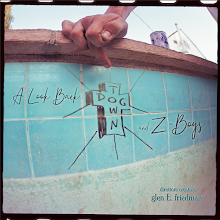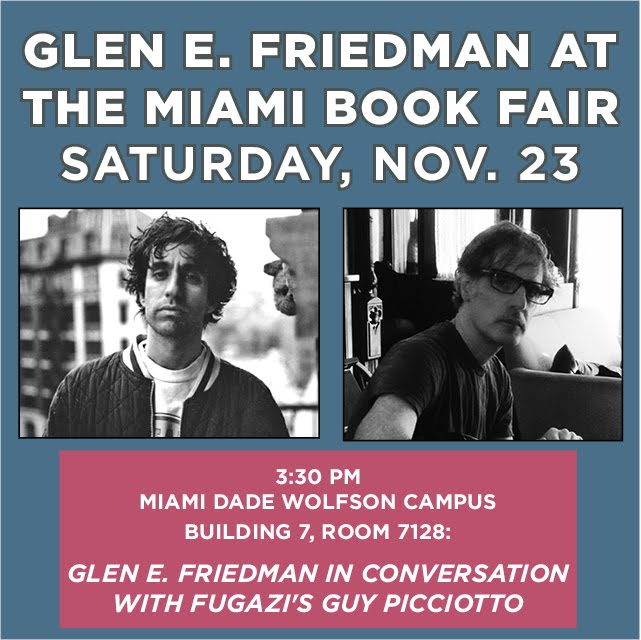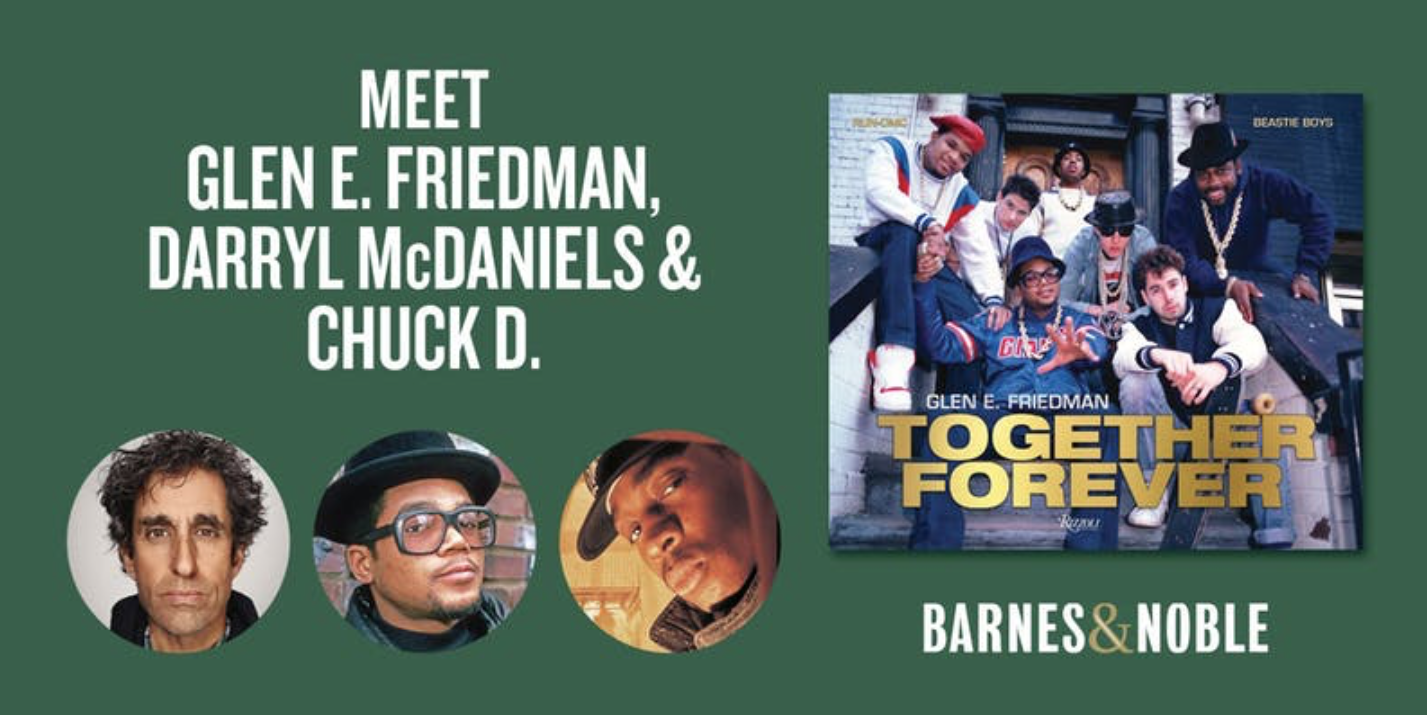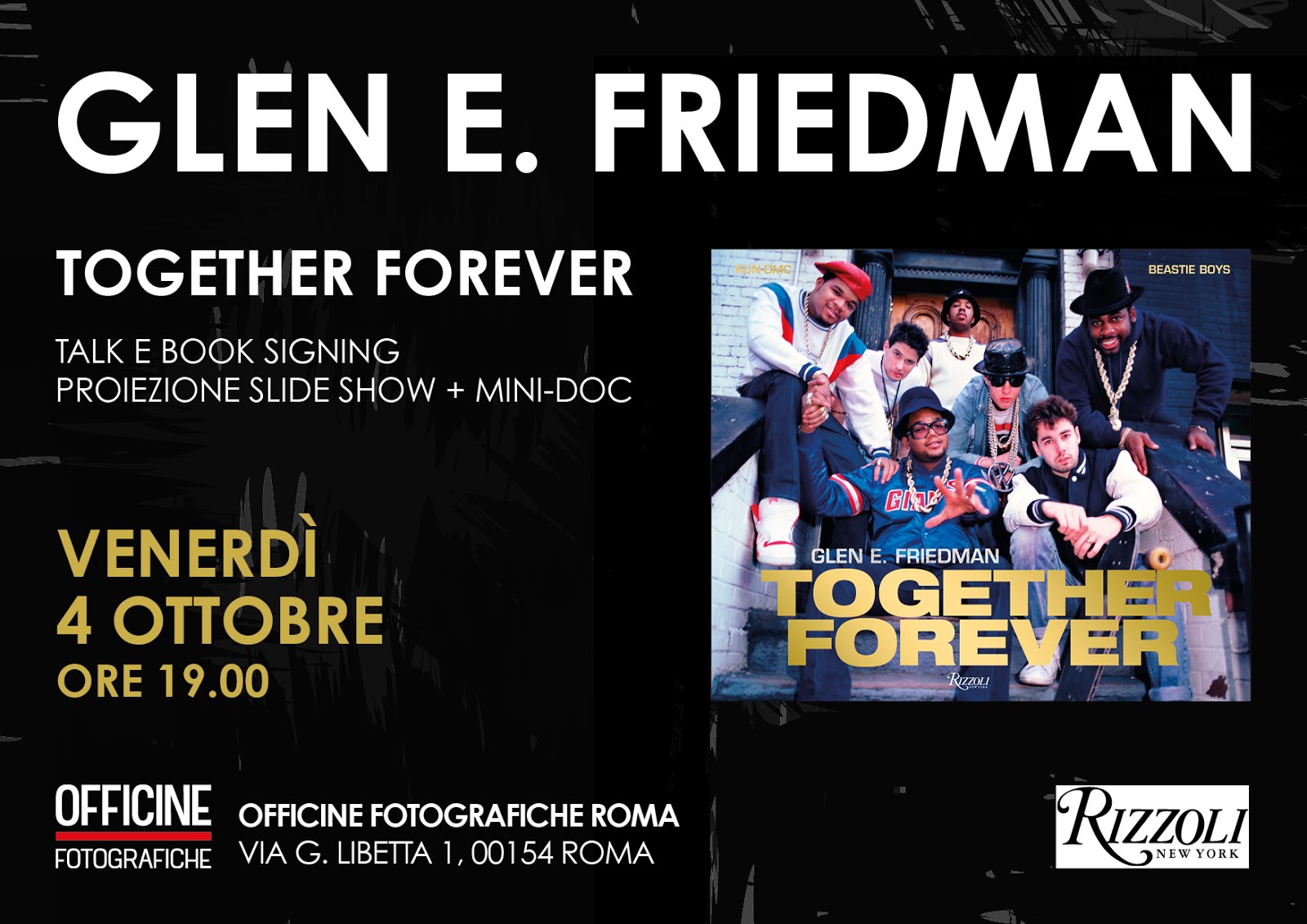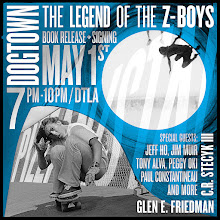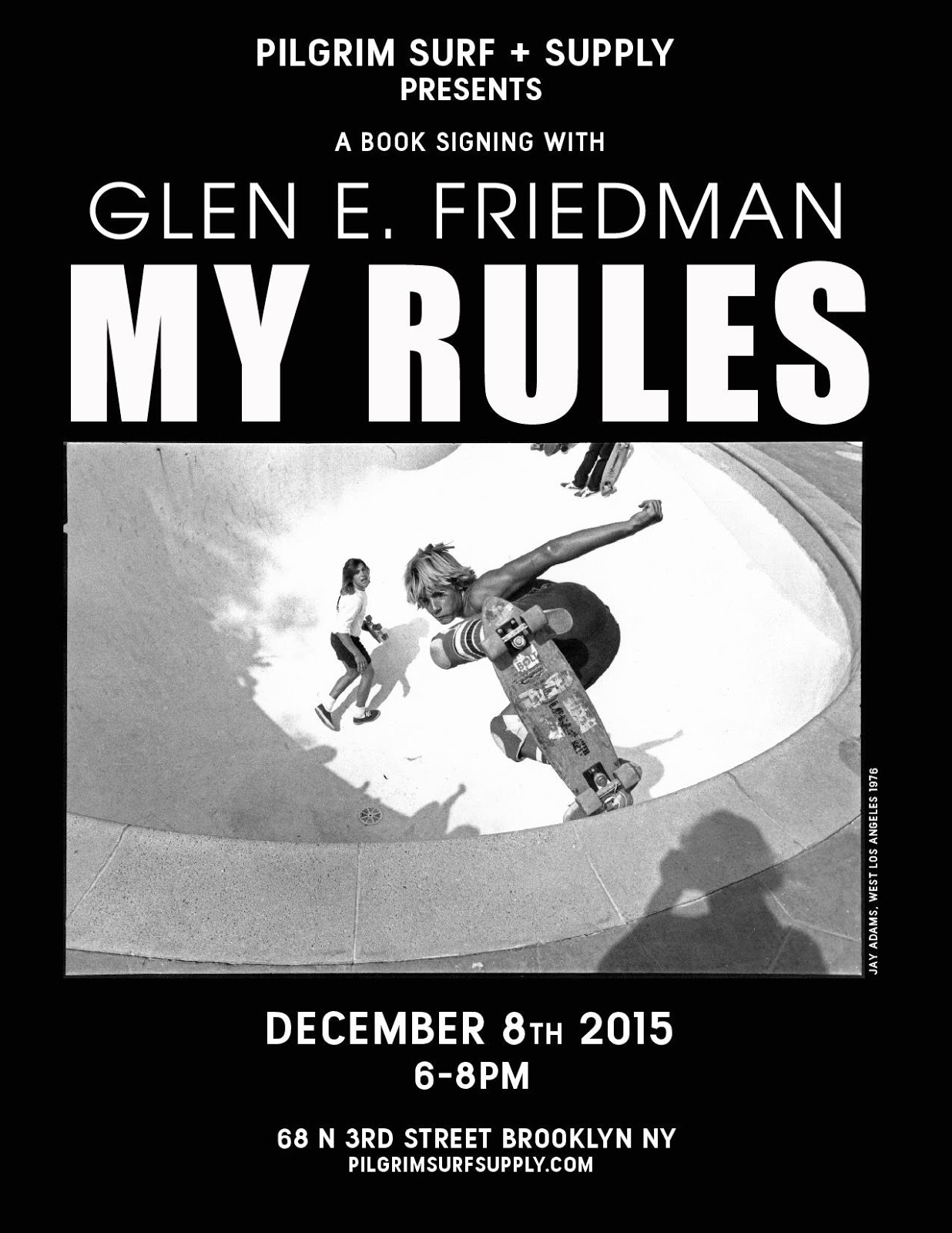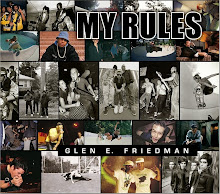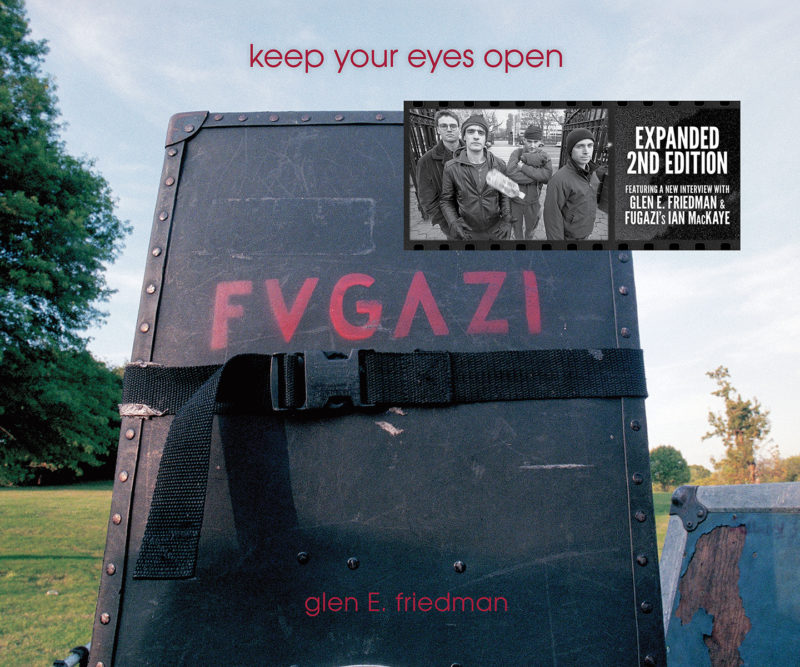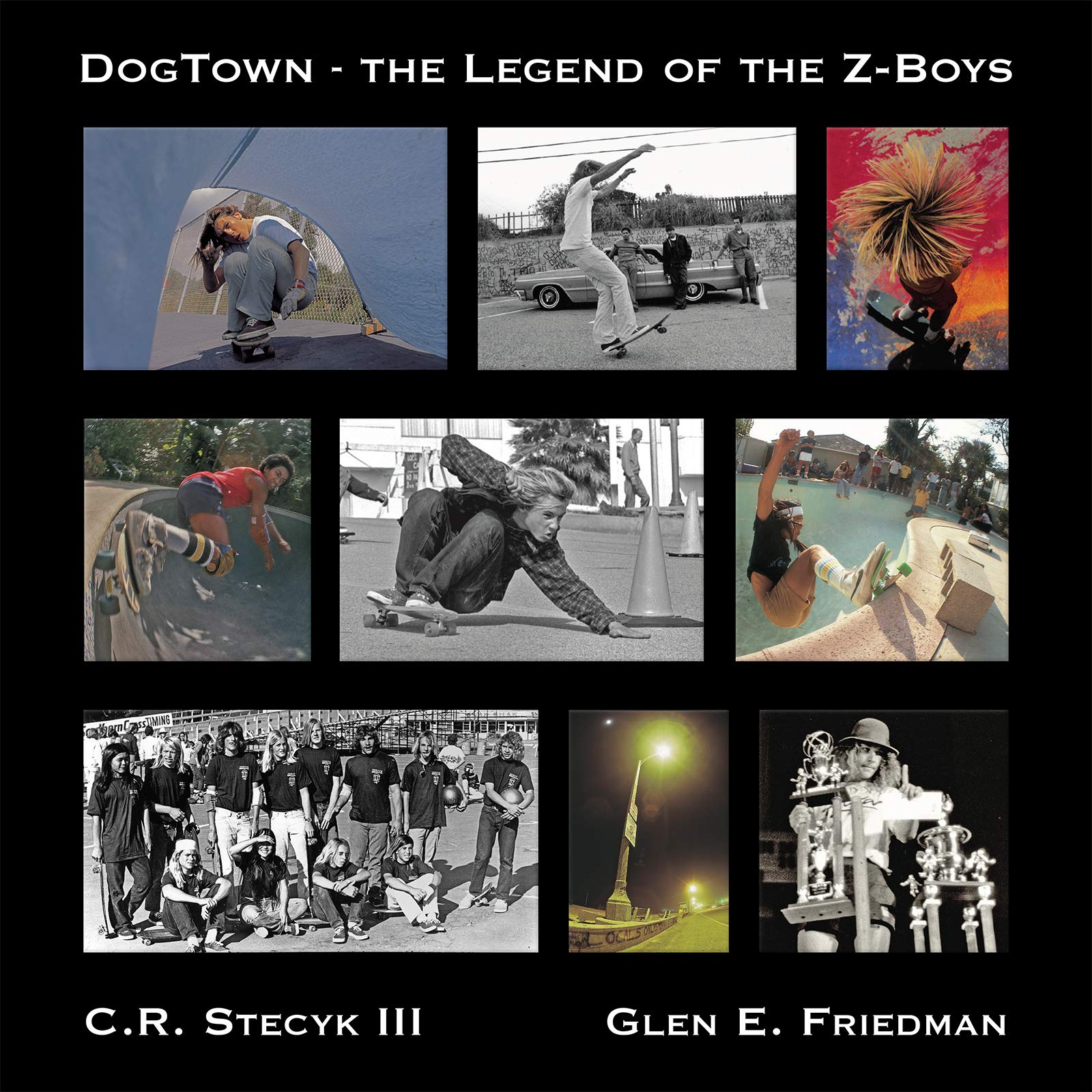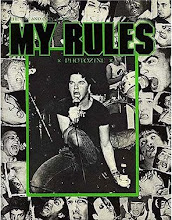Saturday, June 30, 2018
Friday, June 29, 2018
It Takes A Nation of Millions...
released 30 years ago today
A post shared by glen E. friedman Ⓥ (@glenefriedman) on
Thursday, June 28, 2018
Paul McCartney Carpool Karaoke
in case you missed this:
Labels:
Beatles,
Carpool Karaoke,
James Corden,
Late late Show,
liverpool,
paul Mccartney
Wednesday, June 27, 2018
Rep. Maxine Waters inspires the resistance, [D]ump lies
US Representative for California's 43rd district Maxine Waters clearly explains why we need to stand up to the fascist cronies of President Trump.
thanks, Boing Boing
Labels:
Dump,
lies,
maxine waters,
protest
Tuesday, June 26, 2018
TROUBLE FUNK:
NPR Music Tiny Desk Concert
LOVE THIS:
May 30, 2018 | Abby O'Neill -- Go-go — Washington D.C.'s regional twist on funk — reigned in the DMV during the 1980s, and one of the scene's signature acts was Trouble Funk. More than 30 years later, the collective, led by Big Tony Fisher, still fills sold-out venues with heavyweight percussion and call-and-response lyrics. Trouble Funk concerts are bona fide jam sessions, so I was determined to squeeze their unrelenting rhythms behind the Tiny Desk.
With 12 members sandwiched into a cramped space, the electricity was almost tangible as they launched into the 1982 banger "Pump Me Up," a song sampled in Public Enemy's protest anthem "Fight the Power" and M/A/R/R/S's dance classic "Pump Up The Volume." The drum breaks here are definitive go-go and it was hard to discern who was having more fun: the band or the audience. On "Grip It," buoyant and staccato horn melodies propelled the song forward, while "Let's Get Small" featured Trouble Funk's classic call-and-response chants. "Drop the Bomb," another notable gem from their lengthy discography, kept the energy level high and "Don't Touch That Stereo" was all raw, unencumbered funk. To conclude the set, they segued into "E Flat Boogie," their first hit in 1979, with Big Tony's vocals front and center.
While the late Chuck Brown is often acknowledged as the godfather of go-go (and you can see why during his Tiny Desk), Trouble Funk was a key part of the sound's second wave. In a city often interrupted by the transient revolving door of government officials and federal staffers, the funky artform is woven into the fabric of this city and inspires a spirit of dance, rhythm and sheer joy.
SET LIST
"Pump Me Up"
"Grip It"
"Let's Get Small"
"Drop The Bomb"
"It's In The mix" (Don't Touch That Stereo)"
"E-Flat Boogie"
MUSICIANS
Big Tony Fisher (bass), Allyson Johnson (keyboards), James Avery (keyboards), Tony Edwards (drums), Chris Allen (percussion), Larry Blake (percussion), Dean Harris (trumpet), Eric Silvan (saxophone), Paul Phifer (trombone), Derrick Ward (vocals), Keith White (vocals), David Gussom (guitar).
CREDITS
Producers: Abby O'Neill, Morgan Noelle Smith; Creative Director: Bob Boilen; Audio Engineers: Josh Rogosin, James Willetts; Videographers: Morgan Noelle Smith, CJ Riculan, Maia Stern, Dani Lyman; Production Assistant: Joshua Bote; Photo: Eslah Attar/NPR.
Labels:
Funk,
Go-Go,
live music,
NPR,
trouble funk,
washington DC
Monday, June 25, 2018
School of Life Monday:
Nietzsche on: ENVY
Friedrich Nietzsche was one of the great theorists of envy: he believed that envy is everywhere and that most of us don't even realise how much we feel it and the way it powers our behaviour. Having a good relationship with our envious tendencies was for Nietzsche a mark of maturity and wisdom. He is an indispensable guide to living more serenely around our envious pangs.
Labels:
ENVY,
Nietzsche,
philosophy
Sunday, June 24, 2018
The Classic JAY ADAMS photograph
on my Instagram
A post shared by glen E. friedman Ⓥ (@glenefriedman) on
Labels:
film,
fuck you heroes,
GEF,
Jay Adams,
skateboarding
Saturday, June 23, 2018
Friday, June 22, 2018
Thursday, June 21, 2018
Wednesday, June 20, 2018
‘HOW THE WORLD WENT MAD’: A DIAGNOSIS OF THE CONFUSING, TOPSY-TURVY WORLD OF PRESIDENT DUMP

from Dangerous Minds:
I could start with a nod to Franz Kafka’s Metamorphosis by writing:
“Rupert Russell awoke one morning from unsettling dreams to find the world had gone mad.”
But that isn’t quite right and doesn’t fully describe the situation that filmmaker Russell found himself when he awoke on the morning of November 9th, 2016, to the news that Donald Trump had been elected the 45th President of the United States of America. Russell described it better himself:
“I felt a sense of unreality. That I had woken up on a different planet than the one I had gone to bed on.”
Seemingly, the world had had gone mad overnight. But how had this happened? And what had caused this strange insanity?
Russell wanted to understand what the fuck had just happened. He also wanted to do something about this new topsy-turvy world, where the lunatics had taken over the asylum. He was finishing work on his documentary feature Freedom for the Wolf. Nick Fraser, the editor of BBC’s Storyville, had come onboard as executive producer. Fraser had also just launched a new venture, Docsville, and asked Russell if he would like to make some short films for this new platform.
On the day after the election, Russell had written a Medium post on being sane in insane places inspired by the work of David Rosenhan, in particular his famous experiment in which he entered an asylum claiming he heard voices. The doctors and nurses had diagnosed Rosenhan as insane, however, the patients quickly realized that Rosenhan was actually faking it.
Russell also “sketched out two more essays on madness under the new regime of (in)sanity”. He sent these along to Fraser as a possible idea for a series of animations called How the World Went Mad which would diagnose Trump’s election as a form of madness and offer up a possible cure. Fraser told Russell to go for it.
The end result was a series of five short films explaining How the World Went Mad by which Russell asked the very pertinent question:
In a world gone mad who can you trust?
Beginning on that fateful morning in Fall 2016, Russell takes the viewer through a brief history of psychiatry, culture, and politics to explain how we have all ended up here. I contacted Russell to ask him about the making How the World Went Mad and what he hoped his diagnosis of our current malady would achieve.
How did you go about making ‘How the World Went Mad’?
Rupert Russell: I spent a month in the British Library going through histories and psychologies of madness. I picked out studies that could be linked together to form a narrative arc of the series: diagnosis, symptoms, transmission, epidemic, and cure. I turned the notes into scripts, recorded them, and sent the files to Dare Studio in Poland, who had worked on my last feature, who got to work on the animation. The rest is archival footage, which I trawled through.
The most arduous of which was finding out who the infamous “fat guy” that Trump tormented in The Apprentice was. When we locked picture, Alex Williamson composed a wonderfully off-kilter score and three sound designers at Unit Post created a soundscape of insanity filled with screams, explosions, and even orgasms.
The polemic for your films rests on the idea Trump is mad—what happens if he is not mad?
RR: The source of my anxiety, as I describe in Episode 1, “Diagnosis,” is precisely this question: What if Trump is the new definition of sanity and it is I who am in fact mad. The line between sanity and insanity has been a skipping rope throughout history, pulling people in and out of it. Gays, lesbians, and women have only recently escaped their 19th-century diagnosis as perverts and hysterics. The Trump/Pence victory signalled another swing of the rope. In their Handmaid’s Tale morality, these gender traitors deserve no voice in the patriarch’s definition of sanity—where only the male “commanders” are capable of rational judgements.
The insanity of this position should be self-evident. But too increasingly, it’s becoming the new definition of sanity. We are living through another reaction to social progress that has resurrected the same tropes and characters of the feminist backlash in the 1980s, which inspired Atwood’s original novel.
What if Trump is the naked representation of the lowest and baser side of populism in politics? Is he just the base and charmless reality of most politicians and governments?
RR: In the fabled Before Times, no politician—let alone Presidential aspirant—would refer to Neo-Nazis as “good people.” They would have been hurling themselves off the cliff of sanity into the abyss wondered by the lonely, babbling Birchers and the Truthers. But no longer. Now calls to “ban all Muslims” reap rapturous applause from voters. Xenophobia doesn’t have the ring of crazy anymore. The damn of sanity as ruptured.
As Nigel Farage said the day after Brexit to the European Parliament, “isn’t it funny…When I came here seventeen years ago and said I wanted to lead a campaign to get Britain to leave the Europeans Union, you all laughed at me. Well you’re not laughing now.”
Is it fair to suggest the same analysis could be applied to any leader or government? If not, what makes Trump different? What makes Trump so insane and so dangerous?
RR: It is true that the damn of sanity has broken all over the world and flooded our electoral bodies with crazy. But the maddening of our politics has been happening in parallel to the maddening of our media. It’s no coincidence. In the 1970s, it was obvious to Paddy Chayefsky as he wrote the prophetic Network that the quest for ratings would lead us to a place where psychics would predict the news on TV and terrorist groups would have Hollywood agents negotiating their reality show deals. And since the medium is the message, and elections are now experienced through television, it was inevitable that the quest for votes would become the quest for ratings. Trump’s genius was to grasp this shift and act on it.
In some ways, it’s a continuation of the tactics of past Republican presidents. We had the Reagan Show. George W. Bush cast himself the hero in a Jerry Bruckheimer movie. Trump went far further. He’s simultaneously the show’s producer, narrator, protagonist, hero and villain.
What makes Trump so dangerous is that he sees politics as just television by another means. Reagan and Bush used the tropes television had spread throughout popular culture to advance their agenda. For Trump, the ratings are the agenda. So he has an in-built incentive to raise the stakes, be unpredictable, and do something crazy you just have to tune in. Unfortunately, attacking minorities and threatening war achieve these goals better than anything else.
Where do you think this will lead the world?
RR: We’re amusing ourselves to death. Thanks to the global ubiquity of smartphones, we’re now more bored than we’ve ever been. We expect constant stimulation, constant amusement. When you go to Internet/phone addiction rehab, the most important lesson they teach is how to deal with “microboredoms.” Those 30 seconds waiting at a traffic light when people reflexively pull out their phones to fill the micro gap in their day. We also know from psychology that idle hands do in fact make the devil’s work. Boredom gives rise to alcoholism, drug abuse, domestic violence, unemployment, juvenile delinquency and racism.
Trump’s practice of politics as entertainment has come at precisely the right–or wrong–moment in history. Unable to deal with 30-second gaps in our lives, we turn to anything to entertain us. And what a show Trump is putting on. I think what we struggle with is realizing that we aren’t just observers but characters in this show. And our fates are determined by the quest to ensure that the ratings for next years season are even higher.
What do you hope viewers will learn from your films?
RR: Catharsis! I hope they learn they’re not alone in questioning their sanity.
Watch Rupert Russell’s superb series of short films How the World Went Mad here—subscription required.
Tuesday, June 19, 2018
Break up Google
from The Boston Globe:
Go HERE to see the original story and graphs and links:
https://apps.bostonglobe.com/opinion/graphics/2018/06/break-google/
ever in the history of the world has a single company had so much control over what people know and think. Yet Washington has been slow to recognize that Google’s power is a problem, much less embrace the obvious solution: breaking the company up.
Google accounts for about 90 percent of all Internet searches; by any honest assessment, it holds a monopoly at the very gateway to information in the modern world. From there, the company’s power radiates outward, dominating everything from maps to smartphone operating systems to video distribution — vacuuming up huge quantities of highly specific data about users along the way.
Along with Facebook, Google owns sites and services that, by some estimates, influence 70 percent of all Internet traffic. Not coincidentally, the two companies also form a duopoly that gets 73 percent of all digital advertising in the United States, and virtually all the growth in ad spending, on the Internet. Once the lifeblood of a vital free press, and later of a vast array of independent sites serving every possible interest, ad dollars increasingly flow to two tech giants that organize information produced at other people’s expense.
Google’s power is bound to grow still more. Last year, it spent more on federal lobbying than any other company. By tweaking the way information appears on search pages, Google can already promote its own websites and banish competitors to digital oblivion. (Last year, European regulators fined the company $2.7 billion, alleging that it favored its own services over competitors’.) In coming years, as Google’s vast data trove feeds ever more sophisticated artificial-intelligence algorithms, the search giant’s lead over its competitors will lengthen.
In the meantime, the company keeps getting bigger. When it can’t beat competitors, it buys them, as it has done more than 200 times since going public. Increasingly, startups aspire not to dethrone Google, but to be acquired by it. It comes as little comfort that fellow giants Facebook, Amazon, and Apple hem in Google here and there. Competing in an information economy shouldn’t require a market capitalization of a half-trillion dollars or more.
Yet the problem at hand is not merely economic. “A handful of people working at a handful of tech companies steer the thoughts of billions of people every day,” notes former Google design ethicist Tristan Harris. A recent study of 10,000 people from 39 countries suggests Google “has likely been determining the outcomes of upwards of 25 percent of the national elections in the world for several years now, with increasing impact each year as Internet penetration has grown.”
Why is a breakup of Google so unthinkable? Google’s products are undeniably convenient. And, at least on the surface, they’re free; average users are paying not with money, but with their personal data. The company has a near-spotless public image. The famous maxim from the company’s early years — “don’t be evil” — helped cement Google’s public image as one of the good guys.
It is ironic that the company perhaps most responsible for unleashing a tidal wave of human creativity, learning, and, yes, competition is also stifling it. It is frustrating competition, discouraging innovation, punishing American business, and distorting the free marketplace of commerce and ideas. Europe has led the wider fight over the right to privacy and the regulation of data, but the time is right for the United States to lead on dismantling tech monopolies — starting with the most powerful player. So, how to start?
YouTube, for instance, is estimated to be a $15 billion per year business with 1.5 billion monthly users. (Alphabet doesn’t release official breakdowns of the company’s revenue.) If accurate, that would represent more than 10 percent of Alphabet’s ad revenue and about 5 percent of global search.
If the advertising units, DoubleClick and AdMob, were spun off into stand-alone companies, meanwhile, it would introduce more competition into the digital advertising marketplace.
A more aggressive approach would also make stand-alone companies out of YouTube, Android, and Google’s cloud services (Gmail, cloud storage, maps, etc.), separating all of them from Google search.
The company recently announced that its cloud business has grown to a healthy $1 billion per quarter, with more growth projected.
Meanwhile, splitting off the Android operating system and its associated elements would fundamentally change Google’s relationship with the booming mobile market, the future for search and advertising.
And that separation is critical to restoring real competition.
A breakup is critical
Look at the corporate structure of Alphabet and you’ll see a company that spans dozens of fields: e-mail and thermostats, mobile phones and driverless cars, artificial intelligence and virtual reality. But look at the ledgers and you’ll see that Alphabet is primarily an advertising company that dabbles in blue-sky technology projects. More than 80 percent of the company’s revenue comes from advertising — ads on search results, commercials on YouTube, and across the Google ecosystem. Google controls 88 percent of the search advertising market. “If you’re not paying for the product, you are the product,” may be too blithe a way of putting it. But that’s the ad-driven business model that’s been so wildly successful.
That’s come at a steep cost, especially — full disclosure — for the publishing industry. “Billions of dollars have been reallocated from creators of content to owners of monopoly platforms. All content creators dependent on advertising must negotiate with Google or Facebook as aggregator, the sole lifeline between themselves and the vast Internet cloud,” notes Jonathan Taplin, author of “Move Fast and Break Things: How Google, Facebook and Amazon Cornered Culture and Undermined Democracy.”
Would regulation help?
Taplin has proposed some tools that could help tame Google, short of breaking it up. One would be to reassess the 1998 Digital Millennium Copyright Act, which grants almost total immunity to tech companies for copyright violations by their users. YouTube now earns billions of dollars in ad revenue off of user-contributed clips. But under the law, it’s up to individual writers, musicians, and filmmakers to chase down piracy of their work. The law reflected the zeitgeist of the early Internet era, when any whisper of taxation, regulation, or copyright obligation looked like an existential threat to fledgling tech firms, but circumstances have clearly changed.
Another tool would be to prevent Google from acquiring additional tech companies like Spotify or Snapchat. Indeed, the Justice Department should be taking a closer look at acquisitions by all the major tech platforms. When Facebook took over Instagram and WhatsApp, the Obama administration shrugged, as if the social-media giant were just buying a couple of faddish apps for kids — rather than eliminating future rivals.
A third option would be for the government to regulate Google like a public utility, forcing it to license out its algorithms, for instance, to help spur competition. This is akin to what the government did in 1956: A consent decree required AT&T to license all its 7,800 patents royalty-free in exchange for allowing the company to continue to maintain its telephone monopoly. Some services, the logic goes, are natural monopolies; an upstart search engine is no more likely to outmaneuver Google than an upstart phone company was to string up new phone lines from coast to coast.
In the end, though, regulation of the Bell System wasn’t enough to create a dynamic telecom marketplace. Three decades later, the Justice Department forced the company to split itself up.
To be sure, a consensus about how best to break up the company developed only after years of public discussion — about AT&T’s power broadly, and about the specific intricacies of its vast holdings. Similar debate preceded the Justice Department’s actions against Microsoft in the 1990s — which helped companies like Amazon, Facebook, and Google flourish.
For that to happen with Google, Americans need first to start talking about it. In the early days of Alexander Graham Bell’s telephone company, or John D. Rockefeller’s Standard Oil, few realized how much influence either firm would come to exercise. Similarly, we need to shift the way we think about the dominant tech platforms — and especially Google — which have steadily grown, within most American adults’ living memory, from scrappy startups into forces dominating the economy. Our public debates about these issues need to accelerate, too, moving at the speed of technological change, rather than the speed of past precedent. Bewailing the power of tech platforms is not enough; the United States needs to develop regulatory and, yes, antitrust strategies for each of them.
Google is a monopoly because we’ve allowed it to become one. We’ve allowed it to grow at the expense of copyright holders. At the expense of rival search and advertising ventures. At the expense of startups that might someday challenge the giants. At the expense of a narrowing of the way a society acquires information. Today, the act of searching for an answer is synonymous with Googling. And the first answer for how to rein in this digital giant is also the best: break it up.
Go HERE to see the original story and graphs and links:
https://apps.bostonglobe.com/opinion/graphics/2018/06/break-google/
Labels:
corporations,
google,
monopoly
Monday, June 18, 2018
School of Life Monday:
Why You Can Change The World [and should!]
Though it looks like the world is set in its ways, it is in fact eminently open to change by those who dare to swim into the stream of history.
Labels:
"school of Life",
CHANGE,
confidence,
FTW,
Work + Capitalism
Sunday, June 17, 2018
Skateboard Sunday:
The Best of | Daewon Song | Innovation 2018
Daewon David Song (born February 17, 1975) is a Korean-born American professional skateboarder, recognized for his skillful technical street skateboarding.
Labels:
skateboarding
Saturday, June 16, 2018
Why you shouldn't worry about radiation from your Wi-Fi router or iPhone
from AppleInsider.com
There's a lot of bad "science" floating around about radio frequency and electromagnetic field exposure from Wi-Fi routers and the wireless network that your iPhone accesses. AppleInsider delves into the subject, and the actual science behind it.
First and foremost, RF radiation is not the same as ionizing radiation generated by decay of radioactive isotopes, and from the sun itself. This isn't Radiation Physics 101 in 1000 words, so in short, RF lacks the energy that ionizing radiation has to break chemical bonds, ionize atoms, and damage DNA.
Sufficiently high levels of RF radiation can heat tissue and could theoretically cause tissue damage. But, these levels aren't reachable by the public, assuming safety standards are maintained, and the only people that need to be worried about them are generally workers in extremely close proximity to a transmitter.
Without delving into a basic physics lesson about time, distance, shielding, and wavelengths, that microwave in your kitchen is probably 700W. It is focused on the area below the emitter, and shielded by the microwave's structure itself.
That Wi-Fi router that's in your house? It is probably a single watt, with that entire watt diffused over the entire broadcast area.
It's okay if you don't believe us, even though this writer has a background in practical exposure control. Read what the World Health Organization has to say about it, and if you don't want to do that either, here's the takeaway:
That iPhone in your pocket
And regarding your cell phone? That's really no different. The combination of the frequency, the fact that it's not broadcasting at full power constantly, and the low levels of emissions do not produce any noticeable heating effects at all. So, as a result there are no known adverse health effects.
The US Food and Drug Administration has been running studies for 15 years on the topic. The FDA points out that there have been some studies showing minor effects from the devices, but they aren't reproducible. Both the FDA and WHO note that given the profoundly low levels of energy involved, it is nearly impossible to eliminate other causes producing the biological effects in the studies that did find an effect.
"Electromagnetic hypersensitivity"
For some time a number of individuals have reported a variety of health problems that they relate to exposure to electromagnetic fields, or radio frequency radiation. While some individuals report mild symptoms and deal with it by with avoidance, others claim to be so severely affected that they alter their lives to deal with the problem.
This reputed sensitivity to EMF has been generally termed "electromagnetic hypersensitivity" or EHS. But, the scientific studies on the syndrome show that those afflicted have no greater detection of RF fields by symptoms than a user not complaining that they have the syndrome.
The WHO believes that prevalence is "a few individuals per million." Current scientific theories on it suggest that a strobing from CFL bulbs, poor air quality, or either pre-existing psychiatric conditions or new ones induced by stress cause the problem, rather than exposure to RF radiation.
Risk assessment
The radiation exposure industry has an acronym "ALARA" —it stands for as low as reasonably achievable. Workers are trained to maximize the distance from a source, maximize the effect of any available shielding, and minimize the amount of time spent in an environment with exposure.
For RF, distance is covered as long as you don't have a 5G commercial broadcast transmitter or an Aegis radar assembly from a Navy cruiser on your bedroom wall pointed at you. Shielding is mostly a non-issue as the radiation isn't ionizing. And, the heating effect from normal consumer goods use is negligible, so time isn't even a factor as the 0.01C that your ear skin is increasing because of that long phone call to your grandmother doesn't do anything.
In the case of occupation exposure, limits for trained workers are generally set at 10 percent of whatever is considered a "safe" limit. Limits for the general public are normally 1 percent of that safe limit, or much less. In the case of RF, the Specific Absorption Rate (SAR) limit depends on how the measurement is made, but is most restrictively 1.6 watts per kilogram. An iPhone X has a SAR of 1.19 in a worst-case measurement situation at maximum transmission power. If that phone is moved a quarter-inch from your head, then the SAR drops to about 0.6 W per KG.
A wireless router is worst case 0.02 watts per KG at about six inches away from the device, and drops dramatically with distance. Those 50 wi-fi networks you can see from your computer? You're probably looking at a total of 0.1 watts per KG from all the sources combined.
Are you in utterly and absolutely zero danger from RF or EMF? Scientifically, there is no way to exclude the possibility absolutely —but you're in some form of danger every minute of every day from one thing or another.
To put things in perspective, you are in far, far more danger from a lifetime exposure to the ionizing radiation produced by the radon gas in your basement or from getting cancer from sun exposure, than you are from living in the same neighborhood as a cell tower, with twenty Wi-Fi routers surrounding your chair, and actively talking to somebody on 5G on your iPhone with it velcroed to your head for that whole life. And, the risk from the radon-laden basement is relatively low.
If you're still worried about it, don't sit on your router, and use your speaker function on your iPhone.
Studies continue, and will until the sun blacks out, because people are very bad at risk assessment even when given the data. But, science is true if you believe it or not. So, use that router, and get that mesh network going without fear. Break out the cell phones, and don't worry about using them.
Labels:
cell phones,
radiation,
wi-fi
Friday, June 15, 2018
Freedom Friday Film
Bucking the trend of non-stop adrenaline-fueled aesthetics, this short film about a kitesurfing adventure in Rugged Point Marine Provincial Park takes time to appreciate the stunning beauty of the Vancouver Island locale.
Labels:
film,
kite surfing
Thursday, June 14, 2018
Wednesday, June 13, 2018
FUCK THIS:
Poster of lockdown song in kindergarten classroom ...
from Mashable:
It's 2018 and kids in kindergarten are learning letters, numbers, shapes, and how to survive school shootings.
Since more than 20 school shootings have taken place in 2018 so far, educators are taking serious measures to teach students what to do in the event of an active shooter or other emergency on campus.
And while it's extremely important to inform children on safety precautions, this poster of a lockdown song hanging in a kindergarten classroom will absolutely break your heart.
On Wednesday, Georgy Cohen, the mother of a child who will be entering kindergarten in the coming school year, shared a gut-wrenching photo of the classroom she visited.
A poster, seen hanging on the chalkboard, has lyrics to a song about classroom lockdowns largely written in colorful markers. "This should not be hanging in my soon-to-be-kindergartener's classroom," she wrote.
Here are the lyrics:
Lockdown. Lockdown.
Lock the door.
Shut the lights off.
Say no more.
Go behind the desk and hide.
Wait until it's safe inside.
Lockdown. Lockdown.
It's all done.
Now it's time to have some fun!
The tweet gained a lot of traction, sparking a conversation about school safety and the harsh realities of gun violence. Many were also upset that this is an issue children have to start worrying about at just five years old.
Labels:
FUCK GUNS,
FUCK THE NRA,
gun violence,
schools,
this is america
Tuesday, June 12, 2018
Monday, June 11, 2018
School of Life Monday:
The Fragility of Good Government
We are not living in an age of unusual folly. We’re simply rediscovering how rare good government has ever been – and how much there was to appreciate.
Labels:
"school of Life",
capitalism,
government,
society,
work
Sunday, June 10, 2018
Sunday Skateboarding Insanity:
Daewon Song blew me the fuck away
I had no idea...
The best of Daewon Song skateboarding 2017 (Instagram Clips). He's always landed with amazing and unreal tricks.
and this is from 2017!
Labels:
Daewon Song,
inspiration,
skateboarding
Saturday, June 9, 2018
Friday, June 8, 2018
Disneyland workers face ruthless exploitation.
Their fight is our fight Bernie Sanders
- Bernie Sanders
from The Guardian


:recently went to Anaheim, California, the home of Disneyland. I wasn’t there to take my grandchildren to meet Donald Duck or Mickey Mouse or have them go on the rides. I was there to attend a rally with 2,000 Disney workers who are being ruthlessly exploited by Disney, an extremely powerful and wealthy multinational corporation. The rally was organized by a number of unions and held in a large church.
Disney is a $150bn corporation, which made $9bn in profits last year. It received a $1.6bn tax break from the Trump tax giveaway to the rich and, interestingly, has received hundreds of millions in local tax breaks from the city of Anaheim. The Disney board recently reached a four-year compensation agreement with its CEO, Bob Iger, for an estimated $423m.
And, yet, while Disney’s profits soar through the stratosphere and its CEO receives an unimaginable amount of money, the wages and benefits for its workers are atrocious. The people who walk around all day in Mickey Mouse and Donald Duck costumes, the workers who prepare and deliver the food, the men and women who collect tickets and manage the rides, make wages so low that they are barely surviving.
In October 2017, Occidental College issued a report on the economic condition of the workers at Disneyland. The Anaheim area is a very expensive community to live in and yet, despite steep increases in the cost of housing and other necessities, Disneyland workers have suffered steady pay cuts after adjusting for inflation.
Cinderella is homeless, Ariel ‘can’t afford to live on land’: Disney under fire for pay
The average hourly wage for Disneyland Resort workers in real dollars dropped 15% from 2000 to 2017, from $15.80 to $13.36. Today, over 80% of Disneyland workers make less than $12 an hour. Almost three-quarters say that they do not earn enough money to cover basic expenses every month. Over half of Disneyland employees report concerns about being evicted from their homes or apartments.
Incredibly, more than one out of 10 Disneyland Resort employees report having been homeless – or not having a place of their own to sleep – in the past two years. More than two-thirds of Disneyland Resort workers are food insecure. Only 28% of Disneyland employees report having the same schedule every week.
Reports and statistics are one thing. Hearing real human beings describe what’s going on in their lives is another, and the testimony we heard at the rally from six Disney employees was both heartbreaking and mind-blowing.
One low-wage worker wistfully described how, just a few decades ago, Disney was a place where her grandparents worked, fell in love, started a family and could live a middle-class life. But today, that magical place “where dreams come true” has become a nightmare for this worker and many thousands of others.
“Since I started working for Disney, because my wages are so low, I had to move my 16-year-old daughter out of the house,” an employee at Disney’s Grand California Hotel explained. “I can no longer afford to take care of her, so my family members have taken her in and are supporting her. I currently don’t make enough to eat three times a day. I eat cans of tuna or celery sticks and carrots because that’s what I can afford. I typically eat once, sometimes twice, a day because I can’t afford three meals a day.”
Another woman, a licensed cosmetologist, described how she had to live out of her car for three and a half months despite working 40 to 60 hours a week. Eventually she found a place to live, but now she has to drive two hours each way to get to and from work and can barely afford the necessary gas. “I work seven days a week. I pick up overtime whenever I can,” she said. “I’m still barely treading water right now.”
A Disneyland worker who left the company last year said: “I worked for 14 years with the company and I was somebody who excelled at my job. I was one of the top puppeteers.” But “in the 14 years that I worked there, I never crossed the $15 mark for pay”.
What these workers are doing, standing up against the greed of one of the most powerful and profitable corporations in America, takes an enormous amount of courage. If they are able to win a livable wage with good benefits from Disney, it will be a shot heard around the world. It will give other low-wage workers at profitable corporations throughout the country the strength they need to demand a living wage with good benefits.
Unfortunately, what is going on at Disney is not unique. In the midst of a “strong” economy and low unemployment, wages for average workers have not gone up by one penny after adjusting for inflation over the last year. Further, the Federal Reserve recently found that over 40% of the American people do not have $400 in disposable income to pay for an unexpected financial expense like a medical emergency or car repair. In the midst of massive income and wealth inequality, 140 million Americans are struggling financially, with many of them unable to afford healthcare, prescription drugs, childcare, housing or a decent retirement.
The reality is that Disney’s greed, and the greed of corporate America, is destroying the social fabric of our country. This type of ruthless capitalism is not an economic model that we should be embracing. We can and we must do better.
At a time when the three wealthiest people in America own more wealth than the bottom half and corporate CEOs have seen their incomes skyrocket, as 52% of all new income goes to the top 1%, we must create a moral economy which demands that if you work 40 hours a week, you do not live in poverty.
The good news is that workers across America are fighting back. They are sick and tired of working longer hours for lower wages. Whether it is teachers across the country fighting to adequately fund education or fast-food workers demanding $15 an hour and a union, workers all over this country are mobilizing for economic, racial and social justice. Their fight is our fight. Let us create an economy that works for all, not just the 1%.
Bernie Sanders is a US senator from Vermont
Labels:
bernie sanders,
disney,
work,
workers
Thursday, June 7, 2018
RUN-DMC Live circa 1986
from my instagram
A post shared by glen E. friedman Ⓥ (@glenefriedman) on
Labels:
1986,
hiphop,
Raising Hell,
Run-DMC
Wednesday, June 6, 2018
SICKNESS:
Tax-funded charter schools textbooks deny evolution, teach human-dinosaur cohabitation, endorse slavery and indigenous genocide
from Boing Boing:




2,000 US schools use textbooks from Abeka, BJU Press and Accelerated Christian Education (ACE), including tax-funded charter schools across America; students who learn from these texts are taught that God wanted Protestantism to flourish in North America and that Catholocism is not a true faith; that it was better Africans to be enslaved and come to "know Christ" than to be free but not Christian; that evolution is untrue; that humans and dinosaurs lived together (and that Noah brought baby dinosaurs on the ark); that the Loch Ness monster is real; that "abortion, gay rights and the Endangered Species Act" are part of a "radical social agenda"; that nonwhites are inferior (60% of the tax-funded scholarship students at charter schools come from racialized minorities and are thus taught that they are racially inferior to their white schoolmates).
The materials are meant to be administered by people without teaching credentials -- many charter schools do not require these -- with all instruction delivered through easy worksheets that ensure that even qualified teachers can't improve the educational experience. In Florida, atudents who attend charter schools on scholarships are not required to take standardized exams that might uncover gaps in their education.
More than a decade ago, educators with the University of California decided not to recognize some credits from students whose high school courses were based on Abeka or BJU textbooks, saying they did not cover topics students needed to be ready for college. The Association of Christian Schools International sued the university system in 2006 over that decision. A California court ruled in the universities’ favor in 2008.
Good teachers can offer good academics, even if the textbook is subpar, said the experts who reviewed materials for the newspaper, supplementing with other materials and classroom activities.
But ACE is worrisome, they said, because it relies on its workbooks and, therefore, leaves little room for those teacher-based improvements.
Several Central Florida schools that use ACE said one of the curriculum’s selling points is that it works no matter the skill of the teachers — and even if they lack college degrees.
In public schools, Florida teachers need a bachelor’s degree and passing scores on state certification exams, but there are no required teacher credentials for private schools that accept state scholarships.
“Honestly, with our curriculum … a certified teacher is not required,” Natasha Griffin, district superintendent of Esther’s School, which has seven campuses in Florida, told the Orlando Sentinel last year.
Schools Without Rules: Private schools' curriculum downplays slavery, says humans and dinosaurs lived together [Leslie Postal, Beth Kassab and Annie Martin/Orlando Sentinel]


Labels:
charter schools,
ignorance,
religion,
taxes,
wrong
Tuesday, June 5, 2018
The Spectacular Personal Mythology of Rammellzee
from The New Yorker:
Drawing from philology, astrophysics, and medieval history, Ramm channelled the chaos of seventies New York through his art and music.
By Hua Hsu

Drawing from philology, astrophysics, and medieval history, Ramm channelled the chaos of seventies New York through his art and music.
By Hua Hsu

In the late nineteen-seventies, the sociologist Nathan Glazer had grown weary of riding New York’s graffiti-covered subways. The names of young vandals, who identified themselves as “writers” rather than as artists, were everywhere—inside, outside, sometimes stretching across multiple train cars. Glazer didn’t know who these writers were, or whether their transgressive spirit ever manifested itself in violent crimes, but that didn’t matter. The daily confrontation with graffiti suggested a city under siege. “The signs of official failure are everywhere,” he wrote in an influential 1979 essay. Graffiti, with its casual anarchy and cryptic syntax, offered glimpses into a “world of uncontrollable predators.” In the nineties, Glazer’s essay would help inspire the concept of “broken windows” policing—a theory that preserving the appearance of calm, orderly neighborhoods can foster peace and civility.This article appears in the print edition of the May 28, 2018, issue, with the headline “Graffiti Prophet.”
Graffiti has always had this kind of metaphorical power. It is somehow more than art or destruction (even though it is both), and it prompts awe or dread, depending on your tolerance for disorder. For every Glazer, there were romantics like Norman Mailer, who had written the text for a book of photographs elevating graffiti to the status of “faith.” From his perspective, graffiti forced the upper crust to reckon with the names and the fugitive dreams of a forgotten underclass: “You hit your name and maybe something in the whole scheme of the system gives a death rattle.”
Few people understood and internalized this power as deeply as the artist, rapper, and theoretician Rammellzee (which he styled as The RAMM:ELL:ZEE). He believed that his time in the train yards and the tunnels of New York gave him a vision for how to destroy and rebuild our world. He was born in 1960 and grew up in Far Rockaway, Queens. His birth name is a closely guarded secret; he legally changed it to his artistic tag in 1979. (He also insisted that The RAMM:ELL:ZEE was an “equation,” not a name.) Little is known about his youth, aside from passing aspirations to study dentistry (he was good with his hands) and to be a model (in a 1980 catalogue, he is identified as Mcrammellzee).
Ramm—as he became known—believed that language enforced discipline, and that whoever controlled it could steer people’s thoughts and imaginations. His hope wasn’t to replace English; he wanted to annihilate it from the inside out. His generation grew up after urban flight had devastated New York’s finances and infrastructure. Ramm channelled the chaos into a spectacular personal mythology, drawn from philology, astrophysics, and medieval history. He was obsessed with a story of Gothic monks whose lettering grew so ornate that the bishops found it unreadable and banned the technique. The monks’ work wasn’t so different from the increasingly abstract styles of graffiti writing, which turned a name into something mysterious and unrecognizable. Ramm developed a philosophy, Gothic Futurism, and an artistic approach that he called Ikonoklast Panzerism: “Ikonoklast” because he was a “symbol destroyer,” abolishing age-old standards of language and meaning; “Panzer” because this symbolic warfare involved arming all the letters of the alphabet, so that they might liberate themselves. He lived these ideas through his art and his music, and by being part of the hip-hop scene during its infancy.
In 1983, Rammellzee and a rapper named K-Rob went to visit the painter Jean-Michel Basquiat. Though Ramm and Basquiat were friends, they were also rivals. Ramm would later say that Basquiat wasn’t a “dream artist”—he didn’t so much radiate visions outward as take things in like a “sponge,” learning about genius from books. He and Ramm once bet on who could most convincingly parody the other’s work. (Ramm claimed not only that he won but that Basquiat’s art dealer, who wasn’t in on their ruse, told Basquiat that “his” work was the best he had ever done.)
That night, Basquiat invited Ramm and K-Rob to record a song he’d written. Ramm, who had rapped in the movie “Wild Style,” was already known for his unique nasal sneer. (He called it his “gangster duck” style.) The two men looked at Basquiat’s elementary rhymes, laughed, and tossed them in the trash. Instead, they made up their own lyrics—a brilliant, surreal tale of a kid (the earnest, bemused K-Rob) who’s on his way home and a hectoring pimp (Ramm) who tries to tempt him toward the dark side. Basquiat called the song “Beat Bop,” and paid for it to be produced; he painted the vinyl single’s cover art himself. The song was murky and strange, like a spiky funk jam slowed to a sinister crawl. In the background, someone tunes a violin. There’s so much echo and reverb on the track that it sounds like an attempt at time travel.
In the eighties, graffiti gained acceptance in the art world. Despite Ramm’s charisma, the intensity of his work and his stubborn, erratic personality kept him on the movement’s fringes. Where Basquiat and Keith Haring seemed shy showmen, Ramm came across as a nutty professor. His early paintings took inspiration from the psychedelia of comic books and science fantasy, with mazy train tracks running across cosmic reliefs. His palette was attuned to the era’s anxieties about nuclear war and nuclear waste. The colors were bright and garish, suggesting a box of neon highlighters run amok.
In the mid-eighties, he began rendering these ideas in 3-D. He made sculptures that evoked the fossilized remains of twentieth-century life: newspaper clippings, key rings, chain links, and other junk, floating in an epoxy ooze. The most remarkable works were his “Garbage Gods,” full-body suits of armor, some of which weighed more than a hundred pounds. They look like junk-yard Transformers doing samurai cosplay. His most famous character, the Gasholeer, was outfitted with a small flamethrower.
Ramm’s art, thought, and music are the subject of the exhibition “RAMM∑LLZ∑∑: Racing for Thunder,” at Red Bull Arts New York. Befitting the popular drink’s own sense of iconoclasm, “Racing” bathes in Ramm’s frenzied, free-associative, and occasionally overwhelming energy. There are his early canvases and sculptures, along with flyers, business cards, manifestos, and patent applications. A small theatre screens previously unseen videos of Ramm rapping at night clubs. The most impressive part of the survey is a floor devoted to his “Garbage Gods” and “Letter Racers”—skateboards representing each letter of the alphabet, armed with makeshift rockets, screwdrivers, and blades.
Throughout the exhibition, you can hear moments from Ramm’s lectures on Gothic Futurism—a thrilling jumble of street-corner hustling and technical language, all “parsecs,” “integers,” “aerodynamics.” As I was examining a collection of hand-painted watches, I kept hearing Ramm pause as he reached the end of a long disquisition on ecological catastrophe and graffiti-as-warfare, and then bark, “Next slide!”
In early May, the Red Bull Music Festival staged a Ramm-inspired concert to mark the opening of the art show. Ramm had continued to make music after “Beat Bop,” never wavering from his philosophies, just declaring them against increasingly turbulent, industrial-sounding backdrops. The eclecticism of the bill spoke to his wandering ear, and ranged from the terse hardcore of Show Me the Body to the wise-ass raps of Wiki. K-Rob, wearing a T-shirt featuring a mushroom and the words “I’m a Fun Guy,” reprised his verse from “Beat Bop,” grinning the whole way through. Gio Escobar, the leader of the deft punk-jazz band Standing on the Corner, dedicated a song to a late friend. The departed are everywhere around us, he said, as a groove emerged from the band’s dubbed-out chaos. “And they’re waiting.”
As hip-hop and art changed, as graffiti vanished from New York’s trains and walls, Ramm delved further into his own private cosmos—namely, the enormous loft in Tribeca where he lived, which he called the Battle Station. His obscurity wasn’t a choice. In the early eighties, he offered to send the U.S. military some of the intelligence he had gathered for national defense. (It declined.) In 1985, he wrote an opera, “The Requiem of Gothic Futurism.” In the nineties, he tried to promote his ideas by producing a comic book and a board game. He thought that toy manufacturers might want to mass-produce his “Garbage Gods” models. He was the first artist to collaborate with the streetwear brand Supreme. There was a series of infomercial-like videos to seed interest in “Alpha’s Bet,” an epic movie that he hoped would finally resolve the narrative arc of his extended universe.
By the time Rammellzee died, in 2010, after a long illness, New York City had been completely remade by mayoral administrations that took broken-windows policing as gospel. The Battle Station became condos. The Internet has made it easy to take what the culture provides you and rearrange it in some novel, cheeky way. It’s much more difficult to build an entirely new world—to abide by an ethical vision with a ferocity that requires you to break all the rules. I was surprised by how moved I felt standing underneath Ramm’s “Letter Racers” and studying the textures of the “Garbage Gods.” To see their meticulous handiwork up close was to believe that Ramm’s far-flung theories, his mashup of quantum physics and “slanguage,” made sense as an outsider’s survival strategy. I noticed all the discarded fragments of city life—bulbs and screws, a billiard ball, a doll’s head, old fan blades and turn-signal signs, visors stacked to look like pill bugs. His commitment was total. These are works of devotion.
This is where Ramm wanted to live—at the edge of comprehensibility, but in a way that invited others to wonder. Cities are filled with strangers who possess an unnerving energy, who hail us with stories, songs, and poems. Ramm was one of these. In an interview filmed in the aughts, Ramm sheds light on his everyday life. Sometimes, he says, he’ll be walking down the street or sitting at a bar, and people will just look at him. And sometimes they’ll come up to him and ask, “Who are you?” He’s explaining all this while wearing one of his “Garbage God” masks. You notice his paunch, the warm crackle of his voice at rest. “I’m just an average Joe,” he says, and he sounds like he believes it. ♦
One of my all time favorite records:
Labels:
hiphop,
New York City,
Rammellzee
Monday, June 4, 2018
Sunday, June 3, 2018
Saturday, June 2, 2018
Avoiding meat and dairy is ‘single biggest way’ to reduce your impact on Earth
from The Guardian
Biggest analysis to date reveals huge footprint of livestock - it provides just 18% of calories but takes up 83% of farmland
Avoiding meat and dairy products is the single biggest way to reduce your environmental impact on the planet, according to the scientists behind the most comprehensive analysis to date of the damage farming does to the planet.
The new research shows that without meat and dairy consumption, global farmland use could be reduced by more than 75% – an area equivalent to the US, China, European Union and Australia combined – and still feed the world. Loss of wild areas to agriculture is the leading cause of the current mass extinction of wildlife.
The new analysis shows that while meat and dairy provide just 18% of calories and 37% of protein, it uses the vast majority – 83% – of farmland and produces 60% of agriculture’s greenhouse gas emissions. Other recent research shows 86% of all land mammals are now livestock or humans. The scientists also found that even the very lowest impact meat and dairy products still cause much more environmental harm than the least sustainable vegetable and cereal growing.
The study, published in the journal Science, created a huge dataset based on almost 40,000 farms in 119 countries and covering 40 food products that represent 90% of all that is eaten. It assessed the full impact of these foods, from farm to fork, on land use, climate change emissions, freshwater use and water pollution (eutrophication) and air pollution (acidification).
“A vegan diet is probably the single biggest way to reduce your impact on planet Earth, not just greenhouse gases, but global acidification, eutrophication, land use and water use,” said Joseph Poore, at the University of Oxford, UK, who led the research. “It is far bigger than cutting down on your flights or buying an electric car,” he said, as these only cut greenhouse gas emissions.
“Agriculture is a sector that spans all the multitude of environmental problems,” he said. “Really it is animal products that are responsible for so much of this. Avoiding consumption of animal products delivers far better environmental benefits than trying to purchase sustainable meat and dairy.”
The analysis also revealed a huge variability between different ways of producing the same food. For example, beef cattle raised on deforested land result in 12 times more greenhouse gases and use 50 times more land than those grazing rich natural pasture. But the comparison of beef with plant protein such as peas is stark, with even the lowest impact beef responsible for six times more greenhouse gases and 36 times more land.
The large variability in environmental impact from different farms does present an opportunity for reducing the harm, Poore said, without needing the global population to become vegan. If the most harmful half of meat and dairy production was replaced by plant-based food, this still delivers about two-thirds of the benefits of getting rid of all meat and dairy production.
Cutting the environmental impact of farming is not easy, Poore warned: “There are over 570m farms all of which need slightly different ways to reduce their impact. It is an [environmental] challenge like no other sector of the economy.” But he said at least $500bn is spent every year on agricultural subsidies, and probably much more: “There is a lot of money there to do something really good with.”
Labels that reveal the impact of products would be a good start, so consumers could choose the least damaging options, he said, but subsidies for sustainable and healthy foods and taxes on meat and dairy will probably also be necessary.
One surprise from the work was the large impact of freshwater fish farming, which provides two-thirds of such fish in Asia and 96% in Europe, and was thought to be relatively environmentally friendly. “You get all these fish depositing excreta and unconsumed feed down to the bottom of the pond, where there is barely any oxygen, making it the perfect environment for methane production,” a potent greenhouse gas, Poore said.
The research also found grass-fed beef, thought to be relatively low impact, was still responsible for much higher impacts than plant-based food. “Converting grass into [meat] is like converting coal to energy. It comes with an immense cost in emissions,” Poore said.
The new research has received strong praise from other food experts. Prof Gidon Eshel, at Bard College, US, said: “I was awestruck. It is really important, sound, ambitious, revealing and beautifully done.”
He said previous work on quantifying farming’s impacts, including his own, had taken a top-down approach using national level data, but the new work used a bottom-up approach, with farm-by-farm data. “It is very reassuring to see they yield essentially the same results. But the new work has very many important details that are profoundly revealing.”
Prof Tim Benton, at the University of Leeds, UK, said: “This is an immensely useful study. It brings together a huge amount of data and that makes its conclusions much more robust. The way we produce food, consume and waste food is unsustainable from a planetary perspective. Given the global obesity crisis, changing diets – eating less livestock produce and more vegetables and fruit – has the potential to make both us and the planet healthier.”
Dr Peter Alexander, at the University of Edinburgh, UK, was also impressed but noted: “There may be environmental benefits, eg for biodiversity, from sustainably managed grazing and increasing animal product consumption may improve nutrition for some of the poorest globally. My personal opinion is we should interpret these results not as the need to become vegan overnight, but rather to moderate our [meat] consumption.”
Poore said: “The reason I started this project was to understand if there were sustainable animal producers out there. But I have stopped consuming animal products over the last four years of this project. These impacts are not necessary to sustain our current way of life. The question is how much can we reduce them and the answer is a lot.”
Labels:
Environment,
health,
planet,
vegan
Friday, June 1, 2018
Great New York City Tabloid covers yesterday
Subscribe to:
Posts (Atom)












